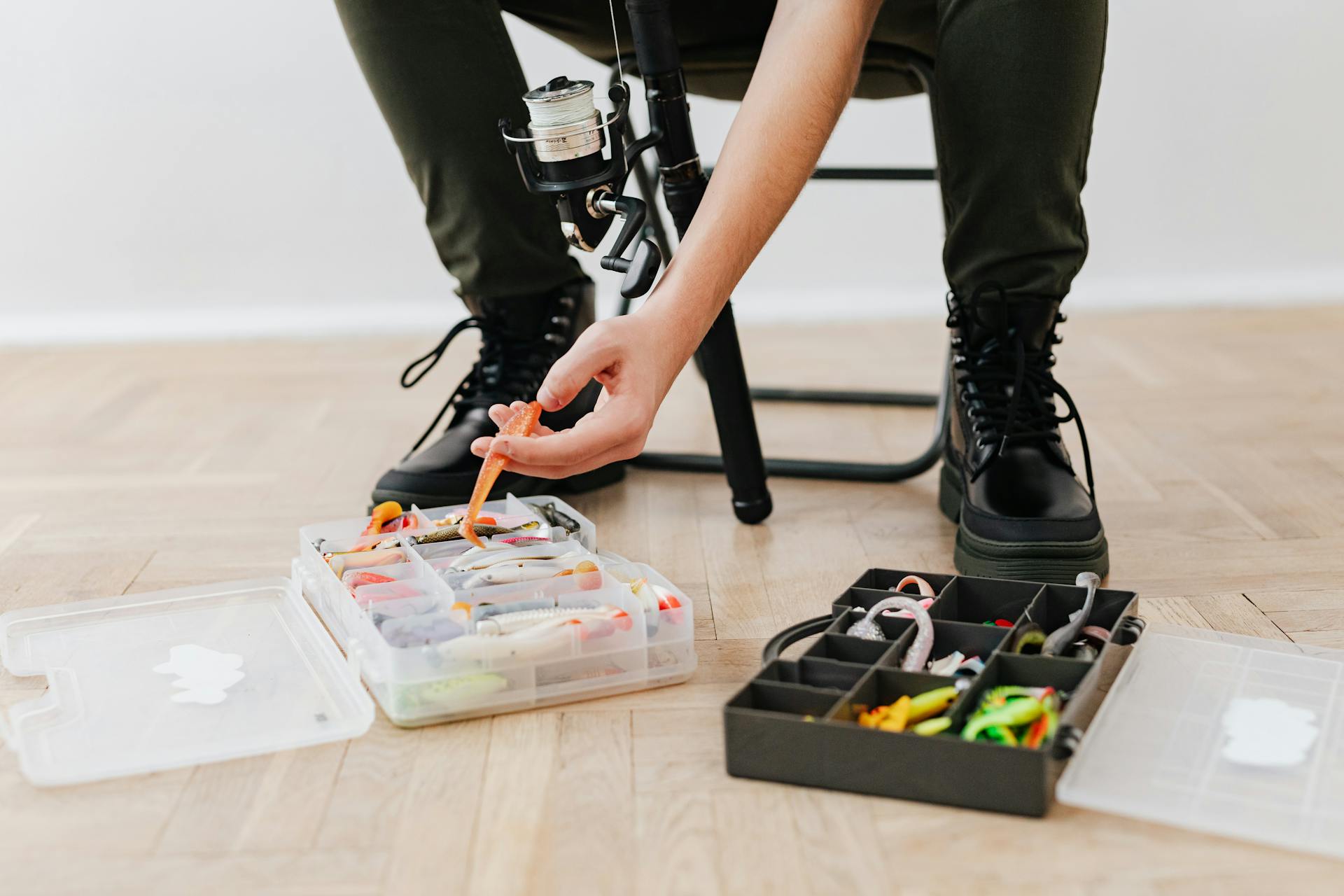Although using live bait and tackle can be deadly, different baitfish species and fishing conditions require different hooking techniques for optimal results. Always remember that the livelier the bait, the smaller the hook and the lighter the trace; yet, if you go too light, the trace may break or the hook may bend, and you may not hook up. It’s a balancing act.
Upper Shoulder Hooking
This is arguably the most often used technique for hooking live baits that are somewhat difficult, such as sprats, kahawai, yellowtail mackerel, kosher, and trevally. This strategy works well with a range of fishing tactics, such as fishing bait beneath balloons and floats, or allowing the bait to swim freely on a single hook while hooked to a sliding sinker rig. Another application for it would be to very slowly troll a bait, maybe reducing the pace by shifting the boat in and out of gear.
The Dorsal Fin’s Hinterman
Larger live baits, like mullet or pinfish, look best when hooked at certain locations just below their dorsal fins. This entails going above and beyond simple attachment to offer stability and promote organic movement. A precise puncture in the back of a baitfish from live bait shop Dundee, aligned concurrently with its dorsal fin, is required for the ideal placement, which results in an identical real-life duplicate.
To completely understand this method, one must weigh the hook about the size of the bait to achieve a balance that won’t make the prey appear ungainly and scare off any prospective predators. This is one of the most important tools you need for trophy-worthy catches since it not only increases stability but also promotes agility, making it an appealing target and increasing the likelihood that larger predatory fish will strike when drawn by actual swimming action.
Nose-Hooking
The method of choice for deploying live baits from live bait shop Dundee in deep water, areas impacted by strong currents, or as an easy way to troll slowly. Along with yellowtail and koheru, it also works well with more delicate live baits like slimy/blue mackerel, skipjack tuna, flying fish, and pilchards. If you include bridle-rigging—which is advised while pursuing billfish since they frequently smash conventionally-rigged baits off the hook—into nose-hooking, the technique works well for trevally, kahawai, and all the other baitfish that have already been discussed.
Tail Hooking
Nightcrawlers, particularly those baited to hook through the snout, are a favourite food source for catfish. Since the fisherman can control the movement of the live bait from the live bait shop Dundee, finesse rigging is typically used when the bait is hooked by its nose using a j-hook. These techniques work especially well when pursuing larger varieties of bait fish or in circumstances requiring a deliberate and gradual presentation.
Don’t forget to modify the size and swimming depth of your lure while using this approach. Not only will the procedure of passing the hook through the snout of your bait ensure its safety, but it will also change its swimming pattern to more closely resemble that of its aquatic prey.
This modest action increases the likelihood of trapping a targeted species with an alluring appeal by transforming your bait into an alluring mark for various predators. When you get proficient at J-hooking through the snout, you can draw attention below the surface of the water and turn your fishing into an art form.
FAQ
1) Are Worms Considered Live Bait?
Ans: Worms are indeed regarded as live bait. A natural or living material called “live bait” is used to entice and capture fish. One of the most popular natural baits for fishing is worms. They are frequently utilized for freshwater fishing in rivers and lakes.
2) How to Keep Live Bait Alive?
Ans: Maintaining oxygen circulation and baitwell water that is colder than the lake is the key to keeping bait healthy during hot weather.” Duckworth recommends filling the baitwell with a two-litre soft drink bottle filled with frozen water. One possibility is to fill the tank with crushed ice.
3) Where to Buy Live Bait Near Me?
Ans: Dundee Bait Shop In East Dundee is a prominent distributor of live baits. In addition to providing professional guidance and practical alternatives, our live bait shop in Dundee provides outstanding customer service. Your demands for live bait are always welcome to receive assistance from our friendly personnel in East Dundee. Confused still? Look up for “gas stations with live bait near me” and our page will guide you to the nearest store within your vicinity.







